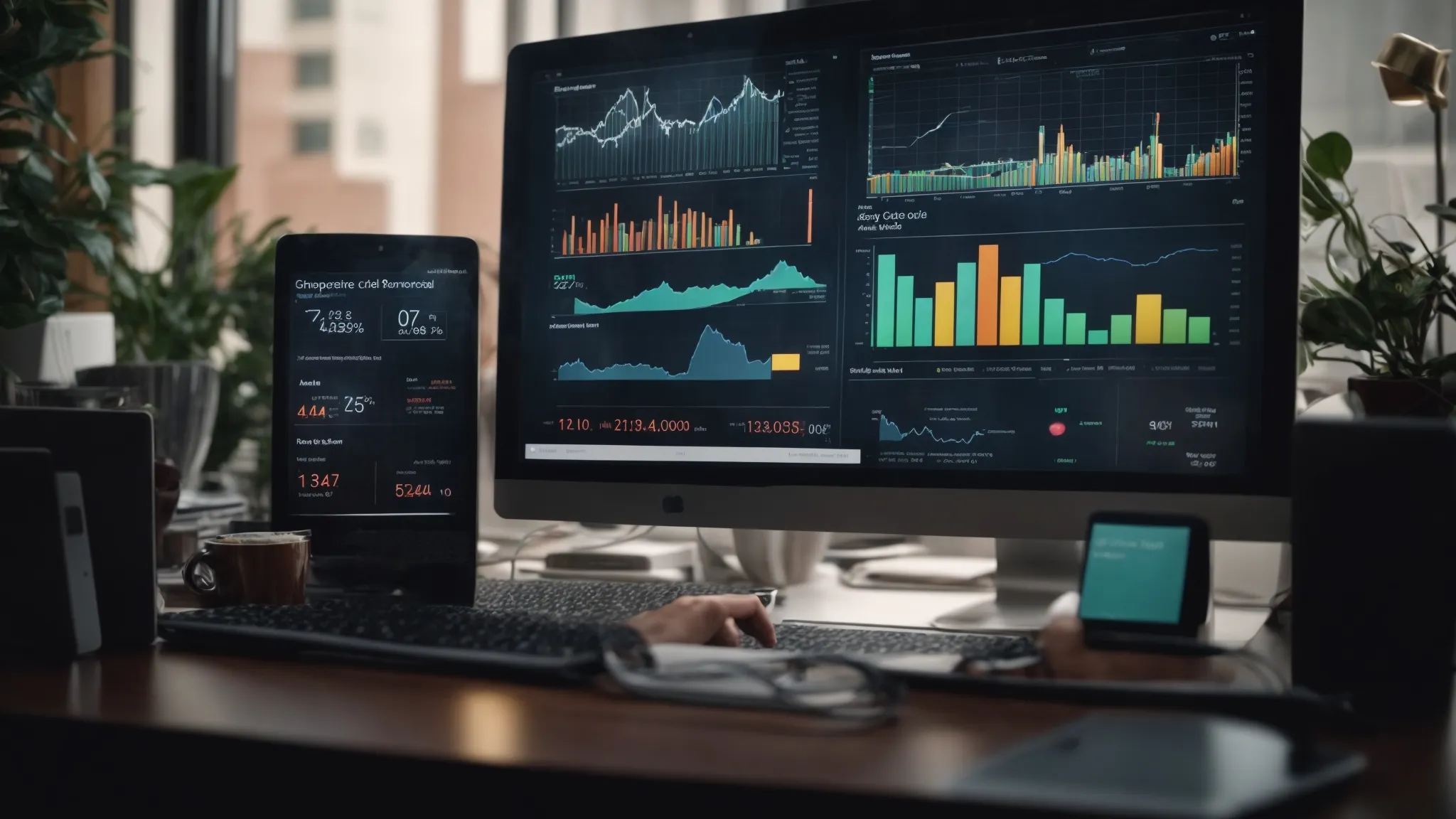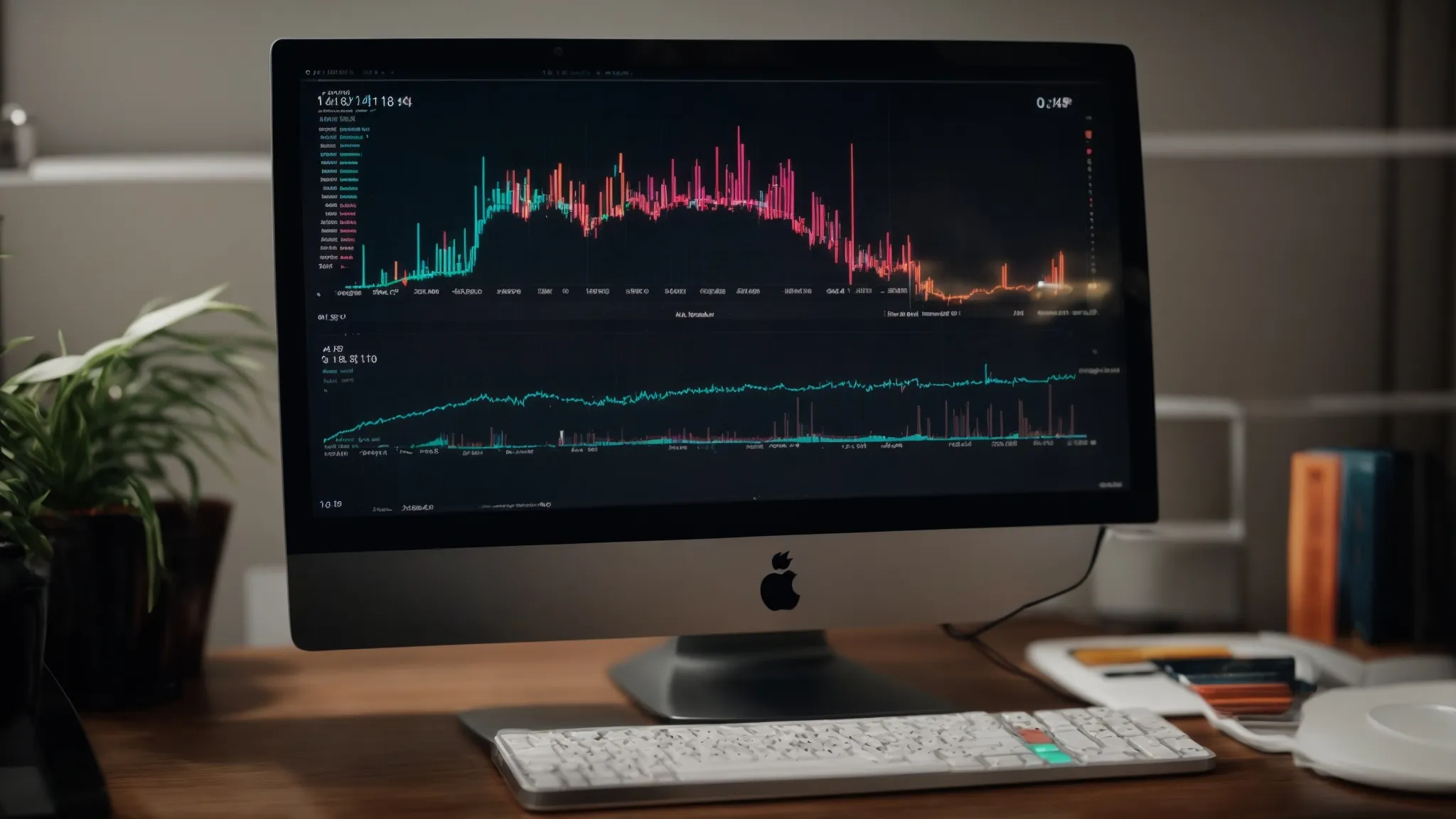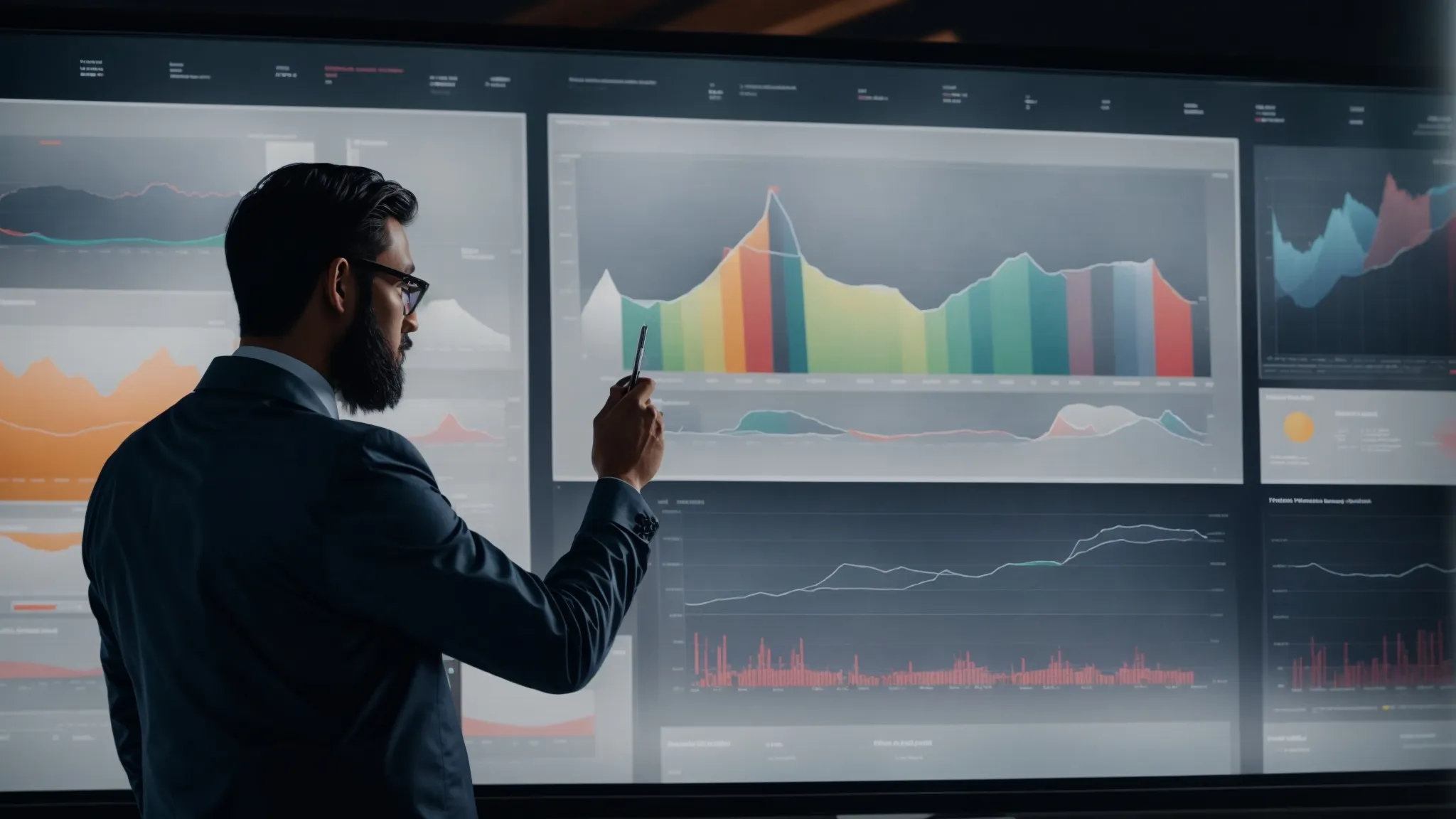Organic Search vs Paid Search: Which Drives More Traffic?
Organic Search vs Paid Search: Unveiling the Most Effective Traffic Strategy In the dynamic landscape of digital marketing, understanding the strengths and limitations of both organic search […]
Organic Search vs Paid Search: Unveiling the Most Effective Traffic Strategy
In the dynamic landscape of digital marketing, understanding the strengths and limitations of both organic search and paid search is imperative for any successful campaign.
While the former relies on fostering relevancy and trust to climb the search engine results, the latter commands immediate visibility at a price.
Decision-makers frequently face the challenge of allocating resources effectively to either channel without neglecting the intricate balance between the two.
As the competition for online visibility intensifies, mastering the symbiotic relationship between organic search and paid search becomes a cornerstone of a robust marketing strategy.
Keep reading to uncover critical insights into leveraging these channels for optimal traffic acquisition and return on investment.
Key Takeaways
- Organic Search Optimization Aligns Content With User Intent, Driving Quality Traffic and Brand Trust
- Paid Search Advertising Provides Immediate Visibility and Precise Targeting for Timely Market Opportunities
- Technical SEO Serves as the Backbone of Organic Growth, Enhancing Accessibility and User Experience
- A Coordinated Strategy That Integrates Organic SEO With Paid Search Leverages the Strengths of Both
- Expert Techniques in Paid Search, Like Compelling Ad Copy and CRO, Are Crucial for Maximizing Campaign ROI
Understanding Organic Search and Its Role in Traffic Building

In the ever-evolving digital arena, organic search stands as a cornerstone for garnering website traffic and bolstering a brand’s online presence.
As companies vie for visibility in search engine results pages (SERPs), understanding the nuances of organic search becomes essential.
This examination unpacks the dynamics of how well-crafted SEO tactics align with user intent to drive traffic, the pivotal role of high-caliber content, and the integrated strategies that elevate organic search standings.
By delving into the efficacy of SEO methodologies and the significance they hold in connecting with the target audience, businesses can quantify the success of their organic search endeavors and finetune their approach to master this critical aspect of digital marketing.
Defining Organic Search in the Digital Landscape
Within the sprawling expanse of the digital realm, organic search represents the method by which users naturally discover content through search engines without the influence of paid advertising. It relies on the intricate algorithms of search engines like Google to sift through countless webpages and present the most relevant information in response to a search query.
Organic search’s potency lies in its ability to pull in a target audience with high intent, as users actively seek out information, products, or services. LinkGraph‘s SEO services harness this intent-driven mechanism, employing robust strategies in search engine optimization to improve search engine rankings and drive quality website traffic for their clients.
How Does Organic Search Drive Traffic?
Organic search cultivates website traffic through its alignment with the specific needs and queries of users. By prioritizing content relevance and authority, LinkGraph’s Search Atlas tool meticulously optimizes pages to answer the natural inquiries of their clients’ target audience, securing higher search engine rankings and nurturing the flow of traffic organically.
Effective SEO strategies deployed by LinkGraph focus not only on keyword density but also on user experience and content value, leading to enhanced organic visibility. This approach propels businesses ahead by resonating with the interests of searchers, thereby increasing the likelihood of high click-through rates (CTRs) and sustained visitor engagement without the reliance on paid search ads.
The Relevance of Organic Search to User Intent
The alignment between organic search efforts and user intent is a critical element that sets the stage for the success of any SEO campaign. When content is carefully tailored to meet the needs and desires of a target audience, the company not only enhances its SERP positioning but also ensures each visitor’s search query yields valuable, actionable results.
In this complex puzzle, LinkGraph expertly bridges the gap between searcher expectations and the content a website delivers. Through comprehensive SEO audits and tailor-made content strategies, LinkGraph’s Search Atlas tool meticulously adjusts the SEO elements to fulfill user intent, thus asserting the importance of understanding and anticipating the needs of the audience.
| Aspect | Organic Search | Paid Search |
|---|---|---|
| User Intent Alignment | High | Medium |
| Content Tailoring | Customized Strategies | Keyword-Driven Ads |
| Audience Targeting | Searcher-Led | Business-Led |
| Search Result Positioning | Algorithm-Defined Ranking | Ad Auction Determined |
SEO Techniques That Boost Organic Search Visibility
Grasping the essence of organic search visibility requires an astute focus on the deployment of SEO techniques; a focus that companies like LinkGraph specialize in with their comprehensive service offerings. At the heart of their expertise lies the implementation of One-Page SEO Services, which meticulously optimize each page to peak performance, greatly enhancing the authority and relevance needed to stand out in the competitive digital ecosystem.
LinkGraph’s adept use of Backlink Analysis and White Label Link Building serves as a linchpin in Fortifying a Website’s Domain Authority, a pivotal factor in organic search rankings. The precision and effectiveness of these strategies ensure clients not only attract but also retain a dedicated audience through a fortified web presence, thus elevating organic search visibility to new heights.
The Impact of Content Quality on Organic Search Results
The quality of content circulating on a website is a quintessential element influencing organic search outcomes. A fusion of relevance, accuracy, and engagement, when woven into blog posts, articles, and web pages, significantly enhances the user experience and fosters a website’s organic search prominence.
- Users gravitate towards content that answers their search queries meticulously.
- Engaging, informative content increases the likelihood of shares and backlinks, augmenting SEO efforts.
- Relevant, high-quality content propels a website to stand out in a sea of search results, encouraging potential customers to convert.
LinkGraph recognizes the potent impact that High-Quality Content Exerts on Organic Rankings. With a strategic content strategy, inclusive of thorough keyword research and compelling blog writing, LinkGraph’s services help clients secure a stable and influential position within the organic search landscape.
Measuring the Success of Organic Search Strategies
Evaluating the performance of organic search strategies transcends basic analytics; instead, it encompasses a comprehensive assessment of key performance indicators (KPIs) relative to objectives. LinkGraph’s adept analysis of metrics like conversion rate, search ranking improvements, and organic visits allows businesses to gauge the precise impact of their SEO activities on overall market success.
LinkGraph’s penchant for detail-oriented scrutiny is evident in how it leverages data-driven insights from Search Atlas to monitor and refine SEO campaigns continuously. These evaluations empower businesses to identify areas of strength and opportunities for growth, tracking incremental progress that informs the ongoing optimization of their organic search strategy.
Paid Search Explained: A Quick Guide to PPC

Moving from the organic strategies that capture user-initiated searches to the tactical realm of paid initiatives, the journey into paid search advertising unfolds a distinctly different narrative in digital marketing.
Commonly known as PPC (Pay-Per-Click), paid search offers immediacy and precision in targeting potential customers through search ads.
This segment explores the fundamentals of how paid search operates, dissecting the anatomy of robust ad campaigns and the strategic targeting that dictates their reach.
The effectiveness and cost-efficiency of these campaigns stand under scrutiny, as does the invaluable data they yield.
Paid search analytics provide deep insights that guide continuous campaign optimization, a crucial aspect for businesses seeking maximized returns on their marketing investments.
What Is Paid Search and How Does It Work?
Paid search, a formidable facet of search engine marketing, involves the placement of ads within, or adjacent to, search engine results pages (SERPs), where visibility hinges on financial investment rather than organic ranking mechanisms. At its core lies the PPC model, which dictates that companies compensate search engines each time a user clicks on their ad, allowing for a precision-targeted approach to reach audiences based on their search queries and interests.
How paid search functions is a testament to the meticulous infrastructure of search ad platforms, notably Google Ads. Upon initiating a paid search campaign, businesses bid on specific keywords relevant to their products or services, and when these search terms are entered by users, ads appear with prominence in SERPs based on bid value, ad relevance, and quality score. This system enables immediate reach and tailored messaging, intrinsic to the powerful allure of paid search in enhancing online visibility.
Key Components of a Paid Search Campaign
A successful paid search campaign hinges on a well-defined structure and strategic ad group segmentation. Central to its performance are relevant keywords and compelling ad copy that directly correlates with the user’s search intent.
The assignment of a budget and bidding strategy tailored to marketing objectives determines how frequently an ad is displayed and the extent of its reach. Setting clear goals and targeting parameters ensures a campaign efficiently resonates with the intended audience and drives meaningful actions:
- Comprehensive keyword research to identify high-intent search terms.
- Creating succinct, persuasive ads that incorporate those keywords.
- Segmenting ad groups for targeted messaging and improved relevance.
- Optimizing landing pages for a seamless user experience post-click.
- Continual analysis and refinement based on campaign performance data.
Targeting Options and Their Effectiveness in Paid Search
Paid search campaigns hinge on the strategic deployment of targeting options, which define the audience that will see the ads. Utilizing factors such as demographics, location, and even the time of day, paid search allows businesses to pinpoint their advertising efforts towards individuals who are most likely to respond positively, thus maximizing ad efficacy and budget utilization.
The effectiveness of targeting options in paid search is made manifest through the precision they impart to search campaigns. LinkGraph’s approach in harnessing these options ensures that clients’ ads are tailored to the nuances of their target demographic, striking an optimal balance between reach and relevance and, in turn, fostering a higher conversion rate for their marketing spend.
Analyzing the Cost-Effectiveness of Paid Search
Analyzing the cost-effectiveness of paid search must go beyond surface-level metrics to truly understand the return on investment (ROI) a campaign delivers. It entailed weighing the cost per click (CPC) against the conversion value, assessing whether the paid search strategy is a profitable avenue for the client’s marketing budget.
- Evaluating campaign success through conversion rates and comparing them against industry benchmarks.
- Determining the average cost per acquisition (CPA) and ensuring it aligns with the financial goals of the campaign.
- Applying data insights to iterate and optimize PPC ads for better cost management and improved ROI.
The effectiveness of a paid search campaign must be measured by qualitative outcomes, such as the impact on brand awareness and the longevity of consumer relationships forged via these marketing channels. LinkGraph, utilizing its extensive expertise in paid search management, conducts a rigorous analysis to assure that clients’ investments yield sustainable business growth.
Paid Search Analytics: Understanding the Data
At the intersection of insight and strategy, paid search analytics serve as the navigational compass for digital marketers intent on dissecting the performance of their PPC campaigns. LinkGraph capitalizes on an array of analytic tools within the Search Atlas suite, turning raw data into a storytelling medium that clearly delineates the path from click to conversion, illuminating the user journey with measurable markers of engagement and effectiveness.
This analytical prowess allows LinkGraph to transcend traditional performance reviews, offering a granular understanding of how paid search ads resonate with the audience. The data extracted informs adjustments in real-time, fostering an agile paid search strategy that meticulously aligns with both market trends and the evolving preferences of the target demographic, ensuring clients’ campaigns perform with maximum efficacy.
The Pros and Cons of Organic Search Traffic

In the intricate tapestry of digital marketing, discerning the superiority between organic search and paid search remains a pivotal concern for growth-oriented businesses.
This section aims to shed light on the multifaceted nature of organic search traffic, peering into the advantages that render it an investment-worthy pursuit.
Yet, within the same stroke, the narrative acknowledges the inherent limitations and complexities that SEO efforts entail.
The discussion will then transition to the sustaining power of a robust organic presence, underscoring its long-term benefits and strategic impact on a brand’s digital imprint.
As companies contend with fluctuating marketing landscapes, the critical evaluation of these aspects equips them with the foresight to craft an informed and effective traffic strategy.
Advantages of Investing in Organic Search
The enduring allure of organic search lies in its capacity to forge sustainable growth for businesses. Companies that allocate resources to organic search strategies, such as those offered by LinkGraph, steadily cultivate a robust online presence that resonates with organic search’s credibility, often cultivating higher trust from users compared to paid advertisements.
An investment in organic search drives not just traffic, but quality traffic that is more likely to engage and convert, thanks to the precise alignment with user intent. Moreover, LinkGraph’s SEO services are designed to enhance visibility and provide an upsurge in website traffic that extends well beyond the fleeting impact of a paid search campaign, compounding benefits over time.
Limitations and Challenges of Organic SEO Efforts
Despite the numerous benefits of organic SEO, the approach comes with inherent limitations and challenges that can hamper a company’s ability to scale quickly. One such limitation is the time investment required; unlike paid search strategies that offer immediate visibility, organic SEO typically demands a longer time frame to manifest significant results. This slow ramp-up period can be a deterrent for businesses seeking swift market penetration.
Moreover, organic search engine optimization is highly susceptible to search engine algorithm updates, which can unpredictably alter a site’s ranking — sometimes unfavorably. The competitive nature of ranking for high-volume keywords adds to the complexity, requiring continuous, strategic content enhancement and backlink acquisition to maintain and improve search engine rankings.
- Time investment and gradual results may deter companies desiring immediate visibility
- Algorithm updates and ranking volatility present ongoing challenges
- Fierce competition for high-volume keywords necessitates constant optimization
The Long-Term Benefits of a Strong Organic Presence
The establishment of a strong organic presence is akin to building a foundation that ensures longevity and stability in the digital marketplace. A continually optimized site with high-quality content engenders credibility with search engines, leading to enduring visibility and an authority that paid ads cannot replicate.
Beyond the immediate metrics of traffic and conversions, the benefits of a robust organic presence permeate brand perception. Users often associate top search engine rankings with industry leadership, fostering trust and a reputation that accrues value over time:
| Benefit | Description |
|---|---|
| Longevity | Steady organic traffic driven by evergreen content and lasting SEO strategies. |
| Brand Trust | Enhanced credibility and perceived industry authority due to higher organic rankings. |
| Cost-Efficiency | A diminished need for paid advertising, yielding long-term cost savings. |
As companies develop their digital footprint through strategic SEO measures, they create an asset that outlives the conventional campaign lifespan. A strong organic presence forms a digital asset that continually attracts and engages the target audience without incurring the recurring costs associated with paid search campaigns.
Weighing the Benefits of Paid Search Advertising

As businesses navigate the complex landscape of digital marketing, paid search advertising emerges as a compelling chapter in the story of online visibility.
This form of advertising can provide swift access to the top of search engine result pages, offering an enticing option for companies in pursuit of immediate impact and enhanced control over their traffic acquisition efforts.
As attention shifts to understanding the investment, flexibility, and scalability of paid search, it becomes apparent that these campaigns are not just about spending but about strategic financial planning.
Accurate targeting and the ability to modify budgets in real-time grant businesses an invaluable tool for adapting to market demands and optimizing their traffic strategy to suit evolving objectives.
The Immediate Results of Paid Search Campaigns
Paid search campaigns offer the unique advantage of instantaneous visibility in the search landscape. By leveraging the power of PPC on platforms like Google Ads, companies catapult their brand to the front line of SERPs, achieving immediate exposure to an audience actively seeking their products or services.
This swift positioning enables firms to capitalize on time-sensitive marketing opportunities, responding to industry trends and consumer demands with remarkable agility. As a result, the agility of paid search campaigns serves as a vital component in the marketing arsenal of businesses that prioritize speed to market and responsive strategy deployment.
Understanding the Investment Behind Paid Ads
Understanding the investment behind paid ads requires a clear evaluation of the costs against the tangible returns these ads generate. An advertiser must scrutinize the Cost-Per-Click (CPC) and consider the overall marketing budget, aligning expenditures with anticipated revenue streams and strategic business goals.
The deployment of paid search advertising is a calculated exercise in financial planning, encompassing not just the upfront ad spend but also the management and optimization of campaigns to ensure a maximized return on ad spend (ROAS):
- Efficient budget allocation influenced by clear campaign objectives and targeted metrics.
- Meticulous tracking of conversion rates to evaluate the financial effectiveness of each ad.
- Adaptive strategies that respond to campaign data, optimizing expenditure for better outcomes.
Flexibility and Scaling in Paid Search Strategy
The dynamic nature of paid search advertising offers businesses a high degree of flexibility and control, enabling precise scaling of campaigns to align with their growth aspirations and market conditions. Paid search strategies permit on-the-fly adjustments in bidding, targeting, and ad placement, empowering companies to optimize their ad performance and market reach continually as their needs evolve.
This scalability allows firms to swiftly respond to the ebb and flow of consumer trends, launching campaigns to seize opportunities or retrenching when prudent to preserve resources. LinkGraph’s expertise in paid search management facilitates this agility, ensuring that clients can expand their reach or intensify their focus with seamless precision, leveraging search advertising as a dynamic tool in their marketing arsenal.
How Organic and Paid Search Influence Each Other

In the realm of search engine visibility, the distinction between organic and paid search is often perceived as a choice between two mutually exclusive strategies.
However, the contemporary digital marketplace showcases a more nuanced interaction, where the artful intertwining of organic search engine optimization and paid search advertising can yield a composite strategy that leverages the strengths of both.
This synergy enhances data insights, enabling businesses to craft more targeted campaigns and optimize their overall online presence.
LinkGraph stands at the forefront of this approach, utilizing its expertise to inform organic strategies with insights gained from paid campaigns, and vice versa, to foster a comprehensive search engine marketing plan poised for maximum effectiveness.
The Synergy Between Organic and Paid Efforts
The orchestration of organic and paid search strategies spawns a formidable alliance, enhancing a brand’s virtual presence and performance on multiple fronts. LinkGraph meticulously integrates insights from each channel to refine targeting, bolster content relevance, and elevate user experience, demonstrating that synergy between them is not merely beneficial, but essential for an optimized digital repertoire.
- Fusing organic SEO insights to refine paid campaign relevance.
- Leveraging PPC data to inform organic content strategies.
- Harmonizing search ads and SEO for superior user engagement.
This melding of tactics propels businesses toward an efficient, data-informed marketing campaign. LinkGraph champions this interplay, ensuring that the reciprocal data flow maximizes impact, driving conversion while simultaneously cultivating long-term brand credibility.
Comparing Data Insights From Both Traffic Sources
Deciphering the interplay between organic and paid search channels hinges on the comparative analysis of data insights from both traffic sources. LinkGraph utilizes its expertise to extract and juxtapose data, facilitating a clearer understanding of user behavior and search patterns that inform multifaceted, search-engine marketing strategies.
The convergence of analytics from organic and paid search equips LinkGraph with the necessary acumen to calibrate marketing campaigns with precision. As organic search yields insights into long-term user engagement trends, paid search analytics rapidly divulge the effectiveness of targeted ad copy and strategic keyword usage.
| Traffic Source | Key Data Insights | Marketing Influence |
|---|---|---|
| Organic Search | User Engagement Trends, Keyword Performance, CTRs | Long-term SEO Strategy, Content Optimization |
| Paid Search | Immediate Ad Copy Effectiveness, Conversion Rates, CPC | Short-term Strategic Adjustments, Budget Allocation |
Using Paid Search to Test for Organic Strategies
In a strategic maneuver, LinkGraph leverages paid search as a testing ground for organic SEO tactics. This method allows the company to assess the viability of keywords and phrases, determining their potency in driving traffic and conversions before integrating them into the broader organic strategy.
- Conducting A/B testing for specific keywords with paid ads to measure user response and conversion potential.
- Applying learnings from PPC ad performance to optimize meta titles, descriptions, and on-page content for SEO.
This approach heightens efficiency in organic endeavors and prioritizes SEO investments informed by tangible, data-backed insights. By iterating on the initial responses garnered from paid search, LinkGraph ensures that SEO tactics are not only inspired by theory but proven effective by empirical evidence.
Organic vs Paid Search: Whose ROI Reigns Supreme?

In the bustling arena of digital marketing, the debate endures—between the time-honored authenticity of organic search and the catapulting efficacy of paid search, which strategy ultimately delivers superior return on investment (ROI)?
With businesses meticulously scrutinizing every dollar spent on marketing, it’s imperative to unravel the nuances encapsulating the ROI of organic efforts against the immediate, calculable gains of pay-per-click (PPC) campaigns.
Understanding the interplay and impacts of these divergent yet interconnected avenues, LinkGraph equips organizations with the insights to intelligently navigate the trade-offs of each, harmonizing cost considerations with revenue outcomes to construct the most potent and profitable traffic strategy.
Calculating Return on Investment for Organic Search
When assessing ROI for organic search, businesses look at the long-term value generated by their SEO campaigns. LinkGraph’s methodical approach takes into account factors such as sustained growth in organic traffic, improvement in search engine rankings, and the overall increase in brand authority—each a testament to the enduring worth of organic search efforts.
Determining the organic search’s ROI involves comparing the investment in SEO services—ranging from content development to link building—with the uptick in organic leads and conversions over time. LinkGraph delivers these insights through Search Atlas, offering clients a granular view of their organic search investments’ return, underlining the compounding advantage of these strategies.
Paid Search ROI Analysis: The Payoff of Pay-Per-Click
Conducting a rigorous Paid Search ROI Analysis, LinkGraph sheds light on the quantifiable merits of Pay-Per-Click campaigns. By meticulously tracking the immediate influx of traffic and the direct correlation to conversion rates, they provide clients with concrete metrics to evaluate the expediency and financial leverage gained through paid search investments.
LinkGraph’s expertise in dissecting Pay-Per-Click data extends beyond superficial click metrics, delving into the true financial impact of paid search. This discerning analysis encapsulates cost management, ad effectiveness, and overall influence on the revenue stream, offering businesses a definitive gauge for the payoff of their paid campaigns.
Balancing Cost and Returns in Organic and Paid
In the arduous task of calibrating the perfect marketing mix, organizations grapple with balancing the cost and returns of organic and paid search strategies. Understanding that each channel provides distinct value propositions and return dynamics is central to achieving this balance: Organic search yields a gradual return that compounds over time, while paid search is characterized by immediate results that necessitate ongoing investment.
| Marketing Channel | Cost Implication | Return Nature | Strategic Value |
|---|---|---|---|
| Organic Search | Lower initial investment, continuous effort | Long-term, compounding | Builds authority and sustainable growth |
| Paid Search | Higher immediate spending, flexible budgeting | Short-term, immediate | Quick market penetration and targeted reach |
LinkGraph navigates the waters of cost-efficiency by deploying organic strategies as a sturdy, long-term foundation complemented by the tactical prowess of paid efforts. This symbiotic approach results in a harmonized marketing investment where organic search anchors a solid digital presence for enduring returns, while paid channels provide a nimble complement that captures timely business opportunities.
Deciding Between Organic or Paid Search Strategies

In the vast expanse of digital marketing, the conundrum facing many businesses today hinges on the selection of the most potent search strategy to drive traffic and achieve marketing milestones.
This pivotal decision—choosing between the organic allure of SEO or the targeted precision of paid search—should be anchored in a thorough assessment of business goals and overarching marketing objectives.
It necessitates a critical evaluation of resource allocation, including time, talent, and budgetary constraints, alongside a meticulous consideration of industry dynamism and competitive landscapes.
The choice determines not just the trajectory of a company’s growth but also the efficiency and effectiveness with which it navigates the digital ecosystem.
Assessing Business Goals and Marketing Objectives
Embarking on the journey of distinguishing the most suitable traffic strategy begins with an in-depth analysis of business goals and marketing objectives. A company’s aspirations for market presence, revenue targets, and audience engagement dictate the alignment and recalibration of their search strategy: organic, paid, or an integrated approach.
The focus is not solely on immediate outcomes but rather on a strategic blend that resonates with the core objectives over the long haul. This evaluations necessitate a full understanding of resources at hand, current market position, and the desired trajectory of growth within the digital ecosystem that their product or service inhabits.
| Strategic Choice | Business Goals Consideration | Marketing Objectives Alignment |
|---|---|---|
| Organic Search | Long-term market presence, authority building | Content-driven engagement, user trust acquisition |
| Paid Search | Immediate impact, quick market penetration | Targeted reach, rapid audience growth |
Resource Allocation: Time, Talent, and Budget
In the conundrum of selecting an effective traffic strategy, the allocation of resources becomes a pivotal determinant. Time investment varies greatly between organic and paid search strategies, with the former requiring diligent, ongoing effort to yield results over time, and the latter offering immediate impact, albeit accompanied by a substantial and persistent financial commitment.
Expertise allocates the realms where talent makes a quantifiable difference: Organic search demands a suite of skills ranging from SEO specialists to content creators, while paid search necessitates adeptness in PPC management and ad optimization. Budget, the crucial financial element, should be judiciously assigned to ensure a sustainable model that accommodates growth and scales in harmony with business development.
| Resource | Organic Search | Paid Search |
|---|---|---|
| Time | Long-term investment, gradual results. | Immediate outcomes, consistent monitoring. |
| Talent | SEO and content development proficiency. | PPC strategy and campaign management skills. |
| Budget | Lower initial costs, sustained over time. | Immediate, higher spend, adjustable based on results. |
Industry and Competition as Factors in Your Decision
In making the pivotal decision between organic and paid search strategies, industry context and competitive landscape play critical roles. Companies operating within highly saturated markets may find that a paid search campaign offers a tactical edge in standing out amongst competitors, while those in niche industries might benefit more from organic search’s capacity to build domain authority over time.
The competitive climate dictates the aggressiveness and specificity of marketing tactics employed. Organizations facing fierce competition for search engine real estate may lean towards the rapid positioning offered by paid search, whereas those with less immediate pressures can afford the gradual but enduring rewards of a meticulously crafted organic SEO strategy, bolstered by LinkGraph’s expertise.
Combining Organic and Paid Search for Maximum Effect

In the competitive landscape of digital marketing, a strategic synthesis of organic and paid search methodologies stands as the linchpin for a comprehensive search engine marketing approach.
Forward-thinking companies increasingly employ a coordinated effort, intertwining the credibility and depth of organic search with the precision and immediacy of paid campaigns to forge a formidable digital presence.
This section delves into the collaborative tactics that harmonize SEO with pay-per-click advertising and examines the empirical success stories from integrated search campaigns, providing a blueprint for businesses seeking to capitalize on the combined strength of both traffic-generating powerhouses.
A Coordinated Approach to Search Engine Marketing
The efficacy of a unified approach in search engine marketing hinges on the harmonious integration of organic and paid search efforts. By employing LinkGraph’s dual prowess, organizations leverage the consistency and trust built through organic SEO alongside the targeted, expedient impact of paid search campaigns, resulting in a strategically layered outreach that captures the full spectrum of search traffic.
LinkGraph champions a coordinated marketing strategy, seamlessly aligning the insights and successes of paid search to bolster organic initiatives, and vice versa. This collaborative endeavor not only enhances search engine visibility but also fosters a synergistic amplification of a brand’s message, cementing a versatile and resilient online presence that outpaces the singular focus of standalone strategies.
Tactics for Synchronizing Organic and Paid Efforts
In the pursuit of synchronizing organic and paid search efforts, marketers must adopt a meticulously integrated approach. This involves utilizing organic traffic insights to inform and refine paid ad targeting, ensuring that PPC campaigns resonally echo the established search engine authority of the brand’s content.
Simultaneously, the data derived from paid search analytics can illuminate opportunities for organic content optimization. By adjusting SEO strategies based on the search terms that drive the most conversions from PPC, brands can enhance their organic content to captivate a similar audience, interweaving the success of both campaigns:
| Organic Search Tactics | Paid Search Tactics | Integration Outcome |
|---|---|---|
| Use of authoritative content | Targeted ad copy | Consistent messaging across channels |
| Keyword performance analysis | Conversion-driven keyword bidding | Coordinated keyword strategy |
Case Studies: Successful Integrated Search Campaigns
Observed through the lens of tangible success, LinkGraph presents case studies where the fusion of organic and paid search has yielded exceptional results. One instance narrates the story of a fledgling e-commerce site that, through comprehensive SEO audits and strategic PPC campaigns, saw a doubling of their conversion rate within a quarter, exemplifying an integrated approach’s potency.
In another compelling scenario, LinkGraph guided a technology service provider to harness Search Atlas’s insights, resulting in a harmonized strategy that boosted organic traffic by 70% and reduced cost per acquisition by 50% through refined paid search tactics. These case studies reinforce the considerable advantage of cross-pollinating organic and paid search methodologies to drive superior marketing outcomes.
Tips to Optimize Your Organic Search Strategy

In the high-stakes chess game of digital visibility, the efficacy of any organic search campaign hinges on the strategic maneuvers executed behind the scenes.
A masterful approach to keyword research and the ensuing optimization lay the groundwork for content that not only captivates but also converts.
Paired with adept link-building, these methods transcend mere rankings, weaving a network of relevance and authority that search engines reward.
Meanwhile, technical SEO remains the backbone of organic growth, ensuring the infrastructure of a website is as accessible to search engines as it is engaging to users.
Each of these facets works in concert to fine-tune the performance of organic search strategies, setting the stage for lasting visibility and traffic that truly resonates with a target audience.
Keyword Research and Optimization Best Practices
Mastering keyword research and optimization emerges as the bedrock of a proficient organic search strategy, whose aim is to align the content offerings with the user’s search intent. Through diligent analysis, LinkGraph determines the keywords that represent a nexus of high traffic potential and the bespoke user needs of a company’s target audience.
- Employing advanced tools within the Search Atlas suite for deep keyword insights.
- Crafting a content strategy that targets both head terms and long-tail keywords.
- Iteratively refining keyword selections based on real-time search trend data.
Optimization transcends mere keyword inclusion; it encompasses placing keywords strategically within meta tags, headers, and throughout the web content, thereby improving relevance and readability for both users and search engines. This practice, refined by LinkGraph’s expertise, ensures that every page becomes a cogent argument for higher search engine rankings.
Content Creation and Link-Building Techniques
In the realm of organic search, content creation is not merely about populating a website with text; it is about fabricating a tapestry of engaging and informative narratives that cater directly to the searchers’ needs and queries. LinkGraph empowers clients with Guest Posting and blog writing services that not only captivate but also retain the audience’s attention, each serving as a beacon for search engines to recognize the website’s topical authority.
Meanwhile, LinkGraph’s White Label Link Building approach serves as the backbone in fortifying a website’s relevance in the eyes of search engines, essentially fostering trust and credibility. This technique weaves the website’s narrative across the web, creating a network of quality backlinks that signals its indispensability for particular topics, thereby boosting organic visibility and search engine ranking.
Technical SEO Essentials for Organic Growth
Understanding and implementing the essentials of technical SEO is pivotal for organic growth, as it ensures a website’s foundation is strong and search-friendly. LinkGraph’s dedicated approach involves meticulously scrutinizing and refining technical aspects, such as site speed, mobile-friendliness, and structured data markup—all key elements that search engines factor into their ranking algorithms.
Additionally, LinkGraph emphasizes the importance of a secure website environment through the use of HTTPS encryption, as well as crafting a clear and coherent site architecture with a logical linking hierarchy. This strategic emphasis on technical SEO not only facilitates seamless site indexing and crawling but also elevates the user experience, a crucial determinant in organic search success:
| Technical Element | Function | SEO Impact |
|---|---|---|
| Site Speed | Page loading efficiency | Affects user engagement and ranking |
| Mobile-Friendliness | Adaptive design for various devices | Essential for mobile search ranking |
| HTTPS Encryption | Secure data transmission | Builds trust with users and search engines |
| Structured Data Markup | Classifies page content for search engines | Enables rich snippets and better visibility |
| Site Architecture | Organization of site pages and links | Facilitates indexing and enhances UX |
Enhancing Paid Search Performance With Expert Techniques

In the competitive arena where organic search and paid search vie for supremacy in driving traffic, the latter stands out with its ability to deliver immediate visibility and measurable results.
To maximize the returns from this channel, it is imperative to implement expert techniques that elevate campaign performance.
Crafting compelling ad copy, deploying advanced bidding strategies for optimal ad positioning, and honing conversion rate optimization are cornerstones of a successful paid search campaign.
These approaches coalesce to transform clicks into valuable customer actions, making them indispensable elements of a comprehensive paid search strategy.
Crafting Compelling Ad Copy for Paid Search
Mastering the art of ad copy is crucial for the efficacy of paid search campaigns, a feat LinkGraph achieves through precision and creativity. By forging messages that resonate with the searcher’s intent and the core values of the brand, LinkGraph’s expertly crafted paid search ads capture attention and drive action, skillfully navigating the balance between informativeness and persuasive appeal.
LinkGraph’s approach to ad copy transcends mere crafting of text, it embodies a strategic amalgamation of compelling calls-to-action with the unique selling propositions of a client’s product or service. Their focus on clear, concise, and targeted messaging ensures each paid ad not only stands out in a crowded digital space but also aligns perfectly with the overall paid search strategy for stellar performance and conversion rates.
Advanced Bidding Strategies and Ad Positioning
LinkGraph’s mastery of paid search further emerges in the application of advanced bidding strategies, ensuring ad positioning is honed for maximum visibility and cost-effectiveness. By tapping into dynamic bidding and leveraging algorithmic adjustments in real-time, LinkGraph positions clients’ ads to achieve optimal placement, dramatically enhancing the probability of high user engagement and click-through rates.
Moreover, the precise calibration of ad positioning, as orchestrated by LinkGraph, transcends mere guesswork. Incorporating strategic use of ad extensions and keyword match types, LinkGraph crafts a paid search presence that not only captures prime SERP real estate but does so with a keen eye on achieving clients’ specific campaign objectives, thereby delivering a formidable competitive edge.
Conversion Rate Optimization for Paid Search Campaigns
Conversion rate optimization (CRO) for paid search campaigns strikes at the junction of user intent and strategic ad placement. LinkGraph tailors these campaigns with a meticulous understanding of the searcher’s journey, ensuring that each ad not only reaches the target audience but also aligns seamlessly with their point of conversion, thus maximizing the probability of a click evolving into a sale or lead.
Crucial to the success of paid search campaigns, LinkGraph employs empirical analyses and A/B testing to refine ad components, such as headlines and landing pages. This relentless pursuit of CRO affirms that each paid ad holds the persuasive pull necessary to guide potential customers from initial interest through to the desired conversion, cementing the campaign’s ROI.
Frequently Asked Questions
What is the difference between organic search and paid search when it comes to driving website traffic?
Organic search drives website traffic through natural search engine results generated from a site’s relevance to a user’s search query, while paid search directs traffic through purchased ads that appear on search engine result pages. The essence of the distinction lies in the method of acquisition; organic search accrues visits through search engine optimization (SEO) efforts, whereas paid search relies on a financial investment into search advertising campaigns.
How does organic search contribute to a company’s marketing strategy?
Organic search underpins a company’s marketing strategy by bolstering its visibility in search engine results, thereby enhancing website traffic and establishing credibility without recurring costs associated with paid search ads. This approach, harnessed effectively through meticulous SEO strategy, aligns with user search intent and generates sustained, quality engagement from the target audience.
What are the advantages and disadvantages of relying on organic search traffic?
Organic search traffic offers credibility and long-term benefits as users often trust organic search results over paid ads, and it generally has better conversion rates. However, the disadvantages include the time and effort required to achieve high rankings, and it is susceptible to changes in search engine algorithms, which can disrupt a website’s traffic flow.
How does paid search advertising, also known as PPC, work in attracting visitors to a website?
Paid search advertising, also termed PPC, attracts visitors by allowing advertisers to place ads on search engine result pages, which display when users enter relevant search queries. This strategy essentially operates as a digital auction, where companies bid on keywords pertinent to their target audience, ensuring their website’s visibility to potential customers actively searching for related products or services.
Can combining organic and paid search approaches lead to better overall results in terms of traffic and conversions?
Absolutely; blending organic and paid search strategies often results in a more formidable online presence, which can lead to increased traffic and conversions. By leveraging both channels, organizations create a synergistic marketing strategy that can address a wider range of search queries and target audience behaviors.
Conclusion
In determining the most effective traffic strategy between organic search and paid search, it’s clear that both hold distinct advantages and can markedly influence a brand’s online presence.
Organic search provides a cost-effective, credible approach to building long-term traffic and enhancing brand authority.
It requires a strategic investment in high-quality content and SEO to align with user intent, yielding gradual but compounding returns.
Paid search, on the other hand, offers immediate visibility and a direct pathway to target audiences through precision targeting and budget control.
It is especially useful for quick market penetration and responsive strategy adjustments based on real-time data.
The synergy of integrating organic and paid search strategies capitalizes on the benefits of each.
By leveraging data from both channels, businesses can optimize their overall search marketing efforts, using insights from paid campaigns to inform organic content and vice versa.
Ultimately, an effective traffic strategy isn’t about choosing one over the other; it’s about recognizing the unique values of both organic and paid search and deploying them in tandem to achieve a balanced, data-driven approach geared towards sustainable growth and immediate market opportunities.














































































